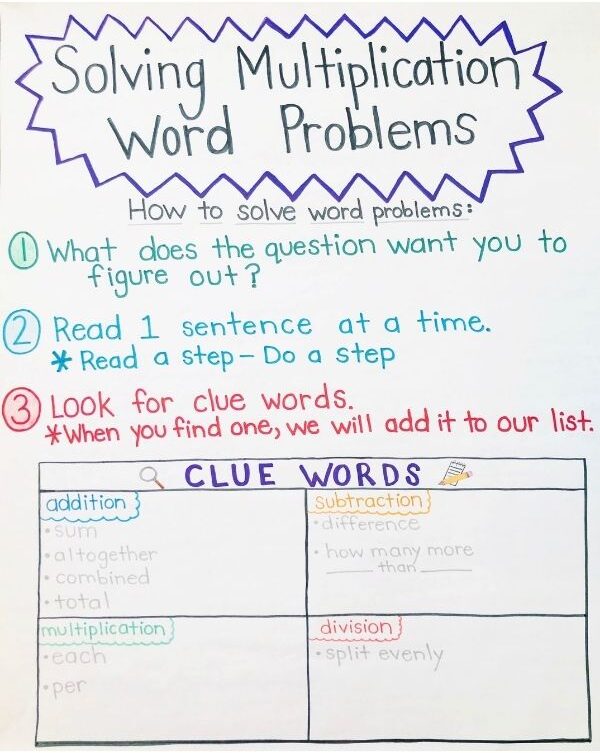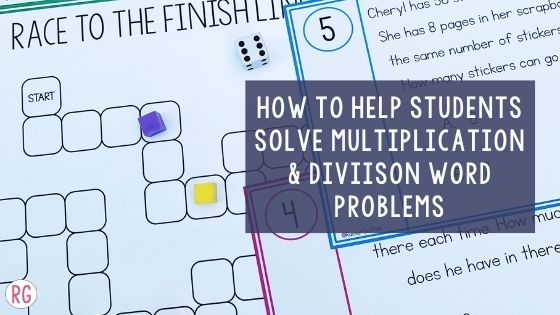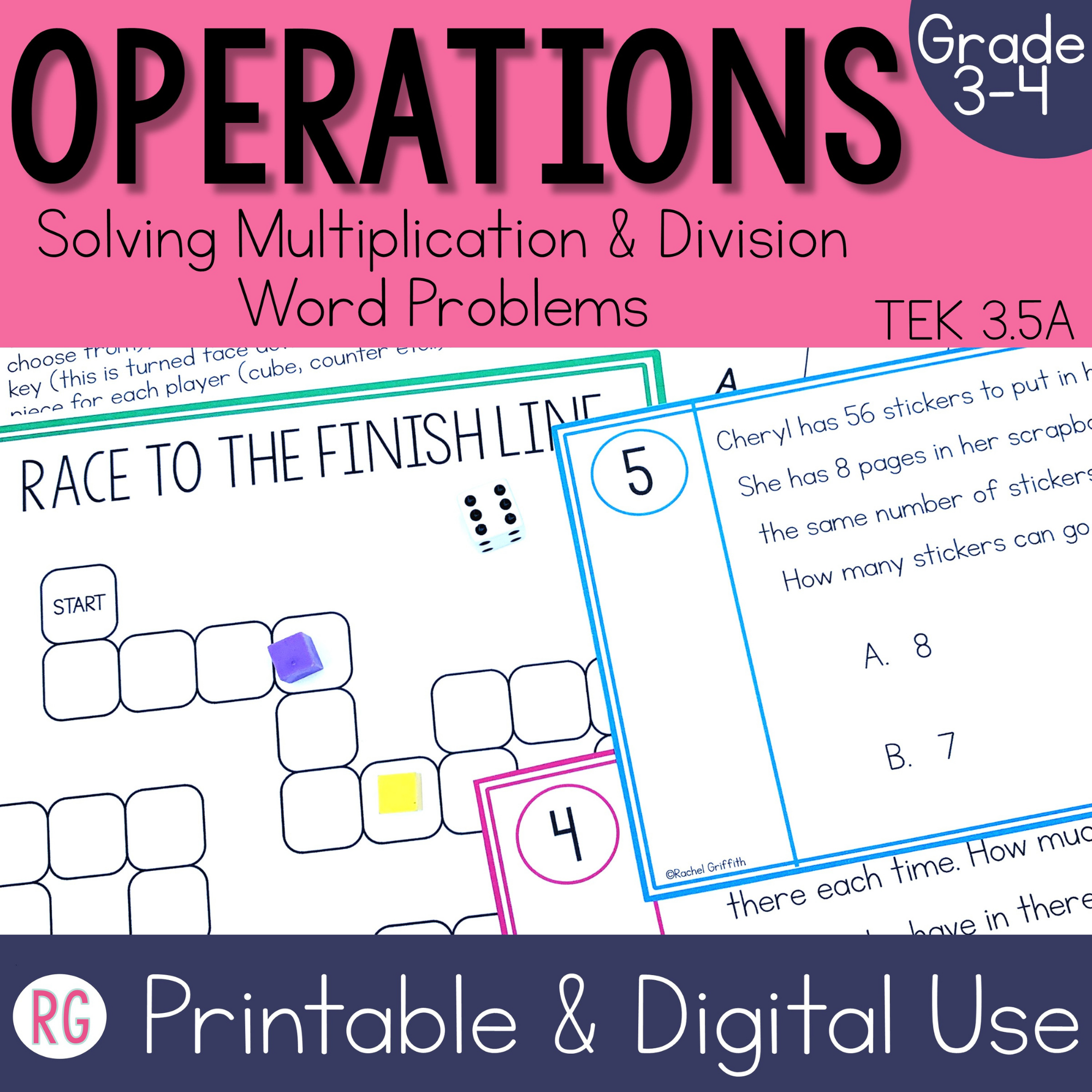Multiplication and Division Word Problems
With these steps, you will never resent multiplication and division word problems again! Using these strategies for solving word problems will help your students master mixed word problems. Multiplication and Division Word Problems are so challenging for many students. It doesn’t matter whether they are in elementary school or high school. Word problems in general cause students to have to first read a problem and then comprehend what it is asking. Lastly, they have to actually choose the correct operation and get the arithmetic correct. As teachers, the first time we hand out multiplication and division word problems worksheets we immediately see how many students get them wrong. Don’t even get me started on mixed multiplication and division word problems. This is where the resentment begins!
Multiplication and Division Word Problems Grade 3
As teachers, we all know that this is a challenge! Whether you are a first-year teacher or even a veteran teacher, it is obvious that this math skill proves to be a very difficult one. 3rd grade word problems become very challenging because they are no longer basic addition and subtraction word problems like in kindergarten through second grade. Our students are now being exposed to mixed multiplication and division word problems.
When students were in the primary grades they had a 50 percent shot of getting the operation correct because they only had two options to choose from. Also, many of the problems had a keyword like total, altogether, left or combine that helped them know what to do. But in 3rd grade, we introduce two step addition, subtraction, multiplication and division word problems. These include all the operations so their chances of guessing correctly have now gone from 50 percent down to 25 percent. Then when you add in the addition of two-step word problems that percent goes down to less than 7 percent.
Wow! Have you ever even thought about that? This why as teachers we start to notice that students are struggling with word problems. Because in lower grades they have a better chance of just guessing and getting the problems correct. As they get in the upper elementary grades they start getting more word problems wrong which makes that red flag go up that these students do not really understand word problems. This is why many teachers resent 3rd grade multiplication and division word problems.
Numberless Word Problems
Starting in first grade, or maybe even kindergarten, our students should be exposed to word problems without numbers. This will help them start developing an understanding of the word problem scenarios and not just guessing the operation. If you have not already checked out numberless word problems then you need to do that now. These have been in a game-changer in my classroom at getting students to understand the scenarios rather than just guessing the operation, that’s why I created FREE videos and a step by step guide to start using them in your classroom. In addition to everything I am telling you in the paragraph below, I use numberless word problems a couple of times a week as my number talks. When using numberless word problems, I am sure to go over one and two step multiplication and division word problems as well.
It’s more than just Multiplication and Division Word Problems Worksheets
So what strategies do I use to teach multiplication and division word problems? Well, to be honest, there are many. Word problems are not one of those skills that you will be able to teach in one day. Heck, you won’t even be able to have them master this skill in one week. They are a skill that you will need to practice for months before your students will ever have the chance to fully master this skill. Teaching word problems involves using many different strategies and interventions, not just one.
The first strategy I always use is taking out the numbers. I have them look at the scenario of the multiplication and division word problems. As they are looking at the scenarios, I have them act out what is happening in the problems. This means that I split my students into groups and give each group a word problem without any numbers. Then I give them time as a group to come up with a skit to show what is happening in their problem. After a few minutes, I then will display that group’s word problem on the board. They will read the problem to the class and then act out the skit. We do this strategy one day every couple of weeks, just to get in that repetition.

Finding keywords for multiplication and division word problems helps, but should not be the only way.
The next strategy I use is to CUBE the multiplication and division word problem. If you do not know what CUBES is then here is a short version. It is an acronym where each letter stands for a different thing to do in the word problem.
C-circle the numbers.
U-underline the question.
B-Box the keywords or math action words.
E-eliminate extra information or silly answer choices.
S-show your work to solve the problem.
This strategy is only beneficial if the students are doing it while actually thinking about what is happening in the problem. For instance, when I first taught this strategy as a first-year teacher I kept thinking this doesn’t work. Well, that was because the students were just going through the motions doing the steps, rather than actually thinking about the word problem.
Oh and also a quick tip is to have your students identify the keywords. Do not just make a list of keywords and put them on the wall. It is more helpful for them to identify them on their own throughout the year and you just add to the chart each time!
The key ingredient for teaching word problems
Lastly, I provide many opportunities to practice with word problems as a class, with partners, and independently. You can do this through games, task cards, small group work, or even exit tickets. I have heard many many teachers looking for ways to get their students to become successful at word problems, but I have found that consistency is the key ingredient. You have to consistently practice word problems with and without numbers in order to help your student master this skill.
You can find many many multiplication and division word problems practice worksheets on Teachers Pay Teachers. This resource not only included multiplication and division worksheets, but it also includes multiplication and division games as well. I have an entire Multiplication and Division Bundle that covers everything from 1 step two-step problems, as well as strip diagrams, input-output tables, and equations.



